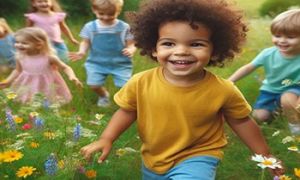Why Is It Important To Teach Kindness To Young Children
1. Promotes Emotional Development
-
Empathy: Kindness helps children develop empathy, which allows them to understand and share the feelings of others.
-
Self-Esteem: Acts of kindness can boost a child's self-esteem and make them feel good about themselves.
2. Builds Positive Relationships
-
Social Skills: Teaching kindness helps children develop important social skills, such as cooperation, sharing, and effective communication.
-
Friendship: Kindness fosters positive interactions and helps children build strong, healthy friendships.
3. Creates a Positive Environment
-
Classroom Atmosphere: A focus on kindness can create a more supportive and inclusive classroom environment.
-
Community: Acts of kindness can strengthen the sense of community and belonging among children and their families.
4. Encourages Positive Behavior
-
Role Modeling: When children see kind behavior modeled by adults and peers, they are more likely to emulate it.
-
Conflict Resolution: Kindness can help children resolve conflicts peacefully and develop better problem-solving skills.
5. Reduces Bullying and Aggression
-
Preventive Measure: Teaching kindness can reduce instances of bullying and aggressive behavior among children.
-
Compassion: By understanding and practicing kindness, children are less likely to engage in hurtful behavior.
6. Supports Cognitive Development
-
Problem-Solving: Kindness encourages children to think about the needs and feelings of others, which can enhance their problem-solving abilities.
-
Critical Thinking: Discussing and reflecting on acts of kindness helps develop critical thinking and decision-making skills.
7. Fosters Long-Term Well-Being
-
Mental Health: Acts of kindness and the resulting positive interactions can contribute to better mental health and overall well-being.
-
Lifelong Values: Early lessons in kindness help instill lifelong values and ethical behavior.
8. Teaches Inclusivity and Diversity
-
Respect for Differences: Kindness promotes respect and appreciation for individual differences, fostering an inclusive mindset.
-
Cultural Awareness: Encouraging kind interactions with people from diverse backgrounds can enhance children's cultural awareness and understanding.
How To Teach Kindness To Toddlers and Preschoolers
-
Model Kindness:
-
Example: Show kindness in your daily interactions. Let children see you helping others, saying please and thank you, and being considerate.
-
-
Praise Kind Behavior:
-
Example: When you observe a child doing something kind, such as sharing a toy or comforting a friend, acknowledge it with positive reinforcement. Say things like, "That was very kind of you to share your toy with your friend."
-
-
Read Books About Kindness:
-
Example: Choose books that have themes of kindness and empathy. Discuss the stories and characters' actions with the children. Some good options include "Have You Filled a Bucket Today?" by Carol McCloud and "Kindness is My Superpower" by Alicia Ortego.
-
-
Engage in Role-Playing:
-
Example: Create scenarios where children can practice being kind. For instance, pretend one child has a problem, and another child helps solve it. Role-playing helps children understand how to act kindly in different situations.
-
-
Encourage Sharing and Helping:
-
Example: Set up activities that require children to share and work together, such as building a block tower or playing a game. Encourage them to help each other and share materials.
-
-
Create a Kindness Chart:
-
Example: Use a chart to track kind acts. Each time a child does something kind, add a sticker to the chart. Celebrate the children's kindness at the end of the week with a special activity or treat.
-
-
Practice Gratitude:
-
Example: Encourage children to express gratitude by saying thank you and appreciating others. You can have a gratitude circle where each child shares something they are thankful for.
-
-
Set Up a Kindness Jar:
-
Example: Have a jar where children can drop notes describing kind acts they did or observed. Read the notes together and discuss how those actions made a difference.
-
-
Volunteer Together:
-
Example: Organize simple volunteer activities, such as making cards for residents of a nursing home or cleaning up a local park. This helps children understand the impact of their kindness on the community.
-
-
Teach Empathy:
-
Example: Help children understand and recognize emotions in themselves and others. Use phrases like, "How do you think your friend feels right now?" or "How would you feel if that happened to you?"
-
-
Storytelling:
-
Example: Share stories of kindness from your own life or from the community. Discuss how acts of kindness can make people feel happy and appreciated.
-
-
Create Kindness Projects:
-
Example: Plan projects that focus on helping others, like collecting toys for a shelter or planting flowers in a community garden. Involve children in the planning and execution of these projects.
-
-
Use Kindness Songs and Rhymes:
-
Example: Teach songs and rhymes that emphasize kindness and caring. Singing together can reinforce positive messages in a fun and engaging way.
-
-
Discuss Real-Life Situations:
-
Example: When real-life situations arise, take the opportunity to discuss them. For instance, if a child sees someone being unkind, talk about why it wasn't nice and what could have been done differently.
-
-
Incorporate Kindness into Daily Routines:
-
Example: Make kindness a part of everyday routines. For instance, have a "kindness moment" during circle time where children share kind things they have done or plan to do.
-
By consistently integrating these strategies into daily activities, you can help toddlers and preschoolers develop a strong foundation of kindness and empathy.
Practical Acts of Kindness
-
Hold the Door Open:
-
Encourage them to hold the door open for someone entering or exiting a room.
-
-
Share Toys:
-
Teach them to share their toys with friends and siblings, especially during playtime.
-
-
Compliment a Friend:
-
Help them think of nice things to say to their friends, like "I like your drawing" or "You're really good at building blocks."
-
-
Help with Chores:
-
Let them assist with simple chores, like setting the table or tidying up their toys without being asked.
-
-
Make a Get Well Card:
-
Provide materials for them to create a get well card for someone who is sick.
-
-
Feed the Birds:
-
Show them how to sprinkle birdseed in the yard to help feed the birds.
-
-
Pick Up Litter:
-
Supervise them while picking up litter in the park or playground to keep the environment clean.
-
-
Donate Outgrown Clothes and Toys:
-
Involve them in sorting out clothes and toys they no longer use to donate to a charity or someone in need.
-
-
Give Hugs:
-
Encourage them to give hugs to friends, family members, or even teachers as a way to show affection.
-
-
Bake Cookies for a Neighbor:
-
Together, bake cookies or a simple treat and deliver them to a neighbor.
-
-
Smile and Wave:
-
Teach them to smile and wave at people, spreading cheer wherever they go.
-
-
Read a Book to a Sibling:
-
Have them read a simple book to a younger sibling or friend.
-
-
Water the Plants:
-
Let them help water the plants in your home or garden.
-
-
Say "Thank You":
-
Encourage them to say "thank you" to their caregivers, teachers, and friends.
-
-
Make a Kindness Jar:
-
Create a "kindness jar" where they can deposit notes about kind deeds they have done or witnessed.
-
-
Write Chalk Messages:
-
Use sidewalk chalk to write positive messages or draw happy pictures on the driveway or sidewalk.
-
-
Bring Flowers to Someone:
-
Pick or buy flowers and deliver them to a neighbor, teacher, or family member.
-
-
Help a Friend Up:
-
Encourage them to help a friend who has fallen down or is feeling sad.
-
-
Plant a Tree or Flowers:
-
Involve them in planting a tree or flowers in the garden as a way to give back to nature.
-
-
Say "I'm Sorry":
-
Teach them the importance of apologizing when they have done something wrong.
-
-
Help a Friend with a Task:
-
Encourage children to help their friends with tasks like cleaning up toys or organizing craft supplies.
-
-
Draw a Picture for Someone:
-
Have them create a drawing to give to a friend, family member, or teacher to brighten their day.
-
-
Say "Please" and "Thank You":
-
Teach them the importance of using polite words like "please" and "thank you" in their daily interactions.
-
-
Offer to Share a Snack:
-
Encourage them to offer a piece of their snack to a friend or sibling.
-
-
Give Compliments:
-
Help them practice giving genuine compliments, such as "I like your shoes" or "You did a great job singing."
-
-
Help Carry Something:
-
Teach them to offer help in carrying light items, like books or craft supplies, for teachers or friends.
-
-
Comfort a Sad Friend:
-
Encourage them to offer a hug or kind words to a friend who is feeling sad.
-
-
Wave at a Neighbor:
-
Teach them to wave and say hello to neighbors, helping to build a friendly community.
-
-
Clean Up the Playground:
-
Supervise them while they pick up litter or organize play equipment at the playground.
-
-
Plant Flowers or Trees:
-
Involve them in planting flowers or trees in the garden or a community space to contribute to the environment.
-
-
Help Set the Table:
-
Let them assist in setting the table for meals, helping to prepare and organize utensils and plates.
-
-
Give Up a Turn:
-
Encourage them to let a friend go first in a game or activity.
-
-
Donate to a Food Bank:
-
Involve them in collecting and donating non-perishable food items to a local food bank.
-
-
Make a Friendship Bracelet:
-
Provide materials for them to make friendship bracelets to give to their friends.
-
-
Bring a Book for Show and Tell:
-
Have them bring a favorite book to share during show and tell, fostering a love for reading.
-
-
Help with Gardening:
-
Involve them in simple gardening tasks like watering plants or pulling weeds.
-
-
Sing a Song for Someone:
-
Encourage them to sing a favorite song for family members or friends to spread joy.
-
-
Share a Blanket:
-
Teach them to share a blanket with a friend during storytime or outdoor picnics.
-
-
Give a High-Five:
-
Use high-fives to celebrate achievements and encourage positive interactions.
-
-
Create a Kindness Chain:
-
Make a paper chain where each link represents an act of kindness they performed or received.
-
These activities not only promote kindness but also help toddlers and preschoolers develop important social and emotional skills. Encouraging and acknowledging these small acts can have a big impact on their understanding of empathy and community.
Examples Of Kindness Projects
Here are some kindness projects that toddlers and preschoolers can participate in to spread kindness and make a positive impact:
Examples of Kindness Projects
-
Creating Care Packages:
-
Activity: Assemble care packages with essentials like toiletries, snacks, and warm socks. Deliver these to a local shelter or organization that supports those in need.
-
Objective: Teach empathy and the importance of helping those less fortunate.
-
-
Community Clean-Up:
-
Activity: Organize a community clean-up day where children, parents, and educators gather to pick up litter in a park or playground.
-
Objective: Instill a sense of community responsibility and care for the environment.
-
-
Kindness Rocks:
-
Activity: Paint rocks with positive messages and colorful designs. Hide them around the community for others to find.
-
Objective: Spread joy and positive messages in the community.
-
-
Thank You Cards for Essential Workers:
-
Activity: Create and decorate thank you cards for essential workers, such as healthcare professionals, firefighters, and police officers.
-
Objective: Show appreciation for those who serve the community.
-
-
Book Donation Drive:
-
Activity: Collect gently used books from home and donate them to a local library, school, or community center.
-
Objective: Promote literacy and share the joy of reading with others.
-
-
Friendship Bracelets:
-
Activity: Make friendship bracelets with beads and string. Give them to friends, family members, or classmates.
-
Objective: Foster friendships and show appreciation for others.
-
-
Planting Flowers in the Community:
-
Activity: Plant flowers in a community garden, park, or around the school.
-
Objective: Beautify the environment and learn about nature.
-
-
Collecting Food for Food Banks:
-
Activity: Organize a food drive where families donate non-perishable food items to a local food bank.
-
Objective: Help provide food for families in need.
-
-
Toy Drive for Children's Hospitals:
-
Activity: Collect new or gently used toys to donate to a children's hospital.
-
Objective: Bring joy to children who are in the hospital.
-
-
Making Bird Feeders:
-
Activity: Create bird feeders using pine cones, peanut butter, and birdseed. Hang them in the garden or community spaces.
-
Objective: Support local wildlife and learn about birds.
-
-
Story Time with Seniors:
-
Activity: Visit a local nursing home and read stories or perform songs for the residents.
-
Objective: Build intergenerational connections and spread joy.
-
-
Create a Kindness Mural:
-
Activity: Collaborate on a mural that depicts acts of kindness and positive messages. Display it in the community or school.
-
Objective: Promote kindness and teamwork through art.
-
-
Warm Clothing Collection:
-
Activity: Collect warm clothing items like hats, gloves, and scarves to donate to those in need during the winter months.
-
Objective: Provide warmth and comfort to those in need.
-
-
Baking for Neighbors:
-
Activity: Bake cookies or other treats and deliver them to neighbors, especially those who may be lonely or need a pick-me-up.
-
Objective: Spread joy and build community connections.
-
-
Pet Supply Drive:
-
Activity: Collect pet supplies such as food, toys, and blankets to donate to a local animal shelter.
-
Objective: Show compassion for animals and support local shelters.
-
Further Reading
Encouraging Kindness in Young Children
The Kindness Curriculum
Implementing The Kindness Curriculum For Preschoolers
Random Acts Of Kindness For Children
Have You Filled A Bucket Today - Free Story On Kindness
Showing Kindness Posters
Drops Of Kindness
Promoting Feel Good February In Early Childhood Services
Garden Of Kindness
Teaching Gratitude To Children



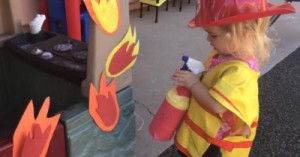
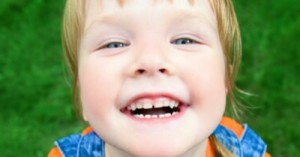


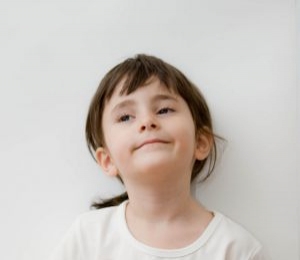 Open ended questions cannot be responded to with one word answers such as yes or no. These types of questions enables a child to provide
Open ended questions cannot be responded to with one word answers such as yes or no. These types of questions enables a child to provide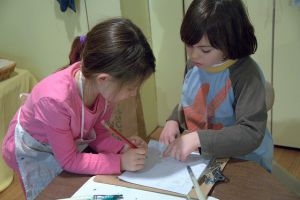 During your child’s preschool years, an important milestone begins to emerge. This is the development of pre-writing skills. Pre-writing skills are used to encourage, develop
During your child’s preschool years, an important milestone begins to emerge. This is the development of pre-writing skills. Pre-writing skills are used to encourage, develop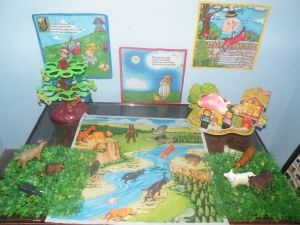 Open ended materials enables children to play freely. They are objects that have no rules to follow, use or function. Raw materials that can be
Open ended materials enables children to play freely. They are objects that have no rules to follow, use or function. Raw materials that can be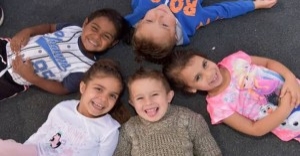 An Acknowledgment of the Country is a way of showing respect for the Traditional Owners and can be given by both non-Indigenous people and Aboriginal
An Acknowledgment of the Country is a way of showing respect for the Traditional Owners and can be given by both non-Indigenous people and Aboriginal Language plays an important role in a child’s development. It enables a child to communicate effectively with their family, learn at school, socialize with friends,
Language plays an important role in a child’s development. It enables a child to communicate effectively with their family, learn at school, socialize with friends,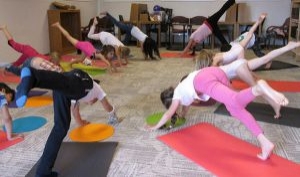 Like adults, children have to deal with their own stress in life. Moving house, starting a new school, preparing for a new sibling - these are
Like adults, children have to deal with their own stress in life. Moving house, starting a new school, preparing for a new sibling - these are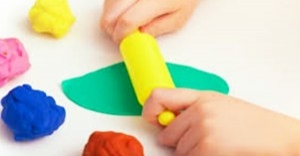 Playdough is such a versatile material. It provides numerous benefits to children as they manipulate it, it is safe and soothing and provides children with
Playdough is such a versatile material. It provides numerous benefits to children as they manipulate it, it is safe and soothing and provides children with Teaching children about sustainability enables them to appreciate and respect the natural environment. Early childhood services can provide meaningful hand on learning experiences in order
Teaching children about sustainability enables them to appreciate and respect the natural environment. Early childhood services can provide meaningful hand on learning experiences in order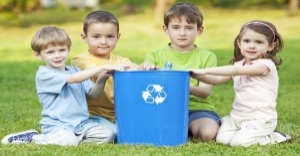 Recycling is an important concept that teaches children to care for the environment. It encourages children to be responsible and show a growing appreciating for
Recycling is an important concept that teaches children to care for the environment. It encourages children to be responsible and show a growing appreciating for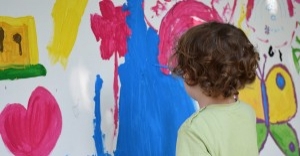 When children apply paint to paper, glue things together, or pound a lump of clay, they experiment with colour, shape design and texture.
When children apply paint to paper, glue things together, or pound a lump of clay, they experiment with colour, shape design and texture.


